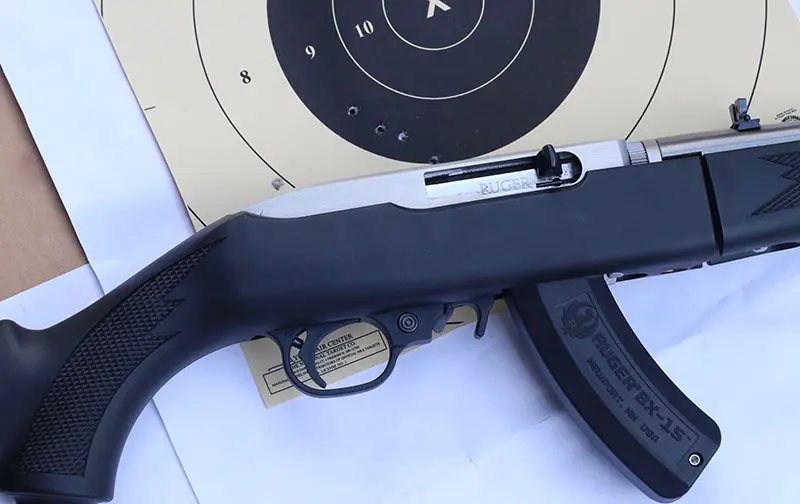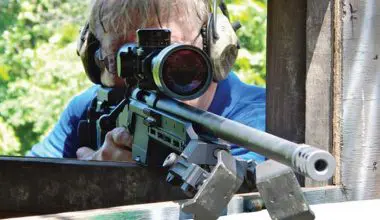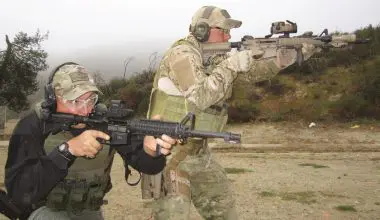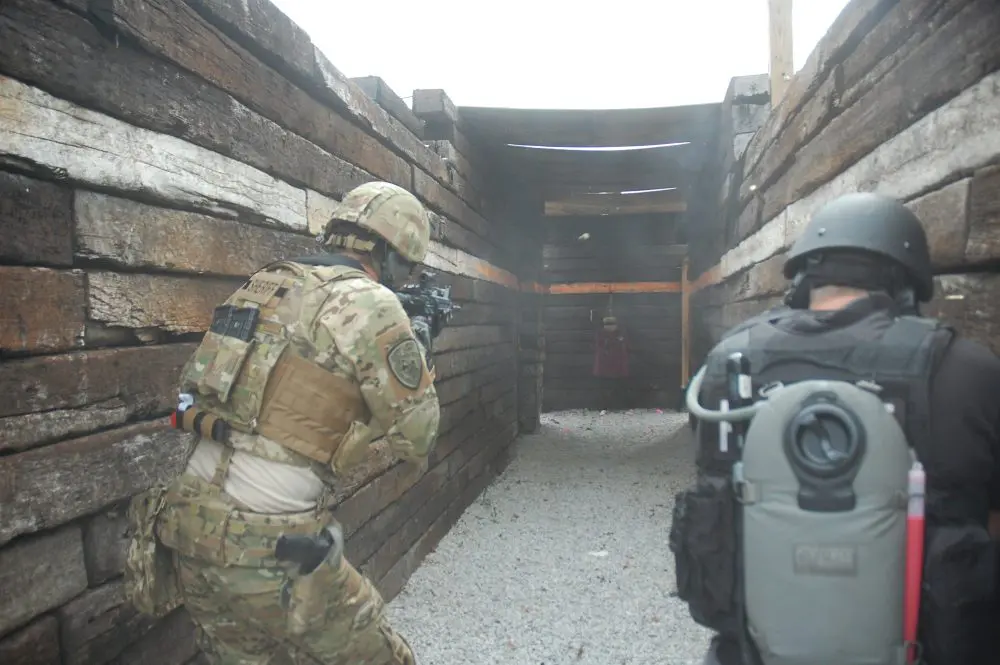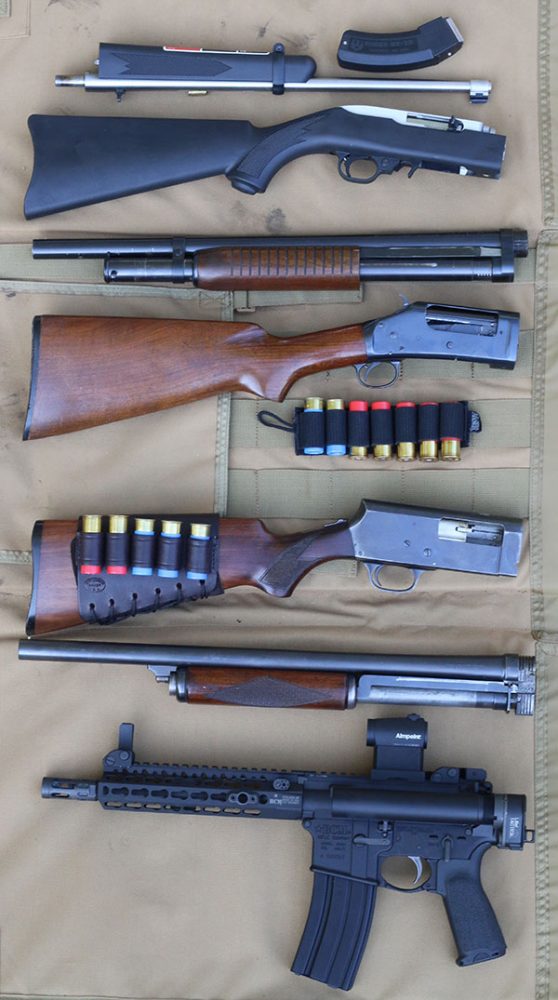
Awhile back, I began working on a mental problem, as shooters are wont to do. What might be the perfect “truck gun”? What options exist for takedown long guns and how practical are they?
As I did research, I rarely found hard numbers to associate with the “putting it back together and shooting it” part for different models. The only way to cure a curiosity like that is to assemble the guns and head to the range. So that’s exactly what I did.
Table of Contents
THE CONTESTANTS
I wanted to include some classic takedowns as well as newer market entries while covering multiple potential applications. I tried to approach the problem from a neutral standpoint, figuring one reader might be reaching behind the truck seat to slap the smokepole together to pot shoot an errant fox near the henhouse, while another might be looking at a survival rifle, and the third preparing for a dramatic collapse of society.
In shotguns, I was able to round up two classic John Browning designs: the Model 1897 Winchester takedown and a Stevens 520. Both were cylinder-bore 20-inch riot guns in 12 gauge. Neither are currently in production, but both are usually available on online auction sites—the 97 in takedown form and the 520 a takedown by design.
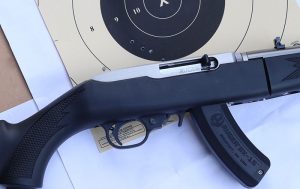
The Ruger 10/22 takedown was a pretty obvious choice. I got one in with the new BX trigger, which drops the pull down to a crisp three pounds. The BCM Recce 9 .300 Blackout Pistol that I reviewed last year (AR PISTOLS: What They Will and Will Not Do, February 2017 S.W.A.T.) was added to the mix wearing the Law Tactical folding stock adapter and an Aimpoint H1. This was before the ATF ruling changed (again), so there was no brace on the receiver extension during the test.
People often don’t think of the AR as a takedown gun, but many case and backpack options carry the carbine this way, and I used the Fireclean endurance test gun (FIRECLEAN: Next Generation Lubrication, March 2016 S.W.A.T.), a Noveske/BCM hybrid with KMR rail and Aimpoint T1 split into upper and lower receivers.
THE SHOOT OFF
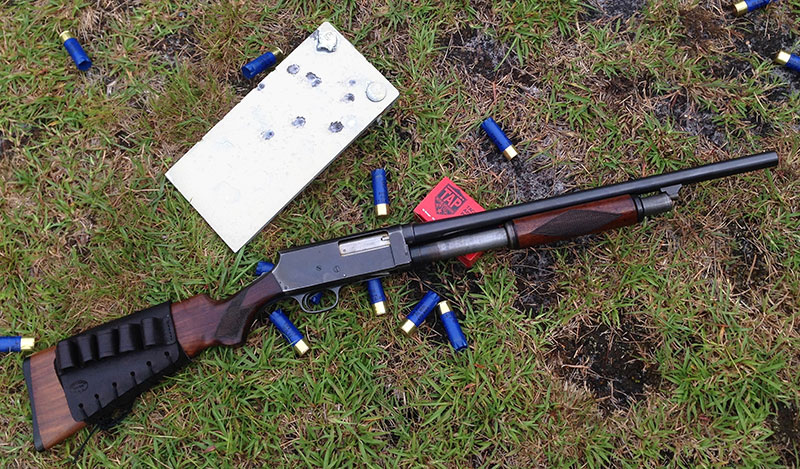
I kicked around a number of scenarios but finally settled on a compromise. The guns started in their respective beginning stages of disassembly inside a Midway USA divided-compartment discreet case. The case was already unzipped to eliminate unnecessary variables in the data.
On the timer’s signal, I retrieved the weapon or halves, readied it, and engaged a Defense Targets A Zone steel target at a little over 40 yards. A very easy shot with any of the firearms involved, but maybe a stretch for those who might be carrying a pistol—shooters who are average-skill pistol shots or even more skilled shooters carrying the ubiquitous subcompact 9mm or snub .38, thus prompting the need for the takedown.
BCM .300 Pistol
I’ve said it before, but this may be the ultimate truck or pack gun with the Law Tactical folding adapter in place. In under five “Mississippis,” I was able to retrieve it, swing the tube into place, rack a round in and smack the six-inch wide target with .30-caliber horsepower. It was also very consistent with little deviation among the runs.
Ruger 10/22 Takedown
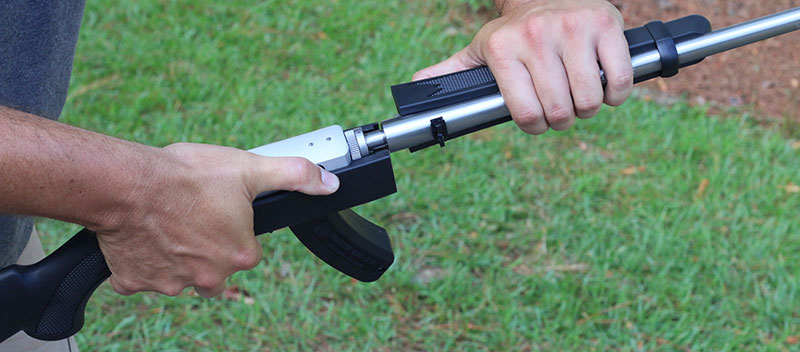
The handy .22 comes apart and goes together remarkably easily. The shooter has only to retract a button on the barrel end while inserting the barrel extension into the receiver with a quarter turn while keeping the bolt retracted slightly. Once the rimfire is back together, it is rather accurate as well. Even with the simple open notch and bead sights, I was able to print a respectable three-ish inch group with the screaming-fast CCI Velocitors at 100 yards, with the best four in under two inches. Small game at normal small-game ranges should be easy money.
AR Carbine
The AR began split in halve-sies with a magazine already inserted into the lower receiver. It was actually very simple to mate the halves and get the rifle up and barking. The data reflects the takedown pins being “out” and ready.
This is optimistic, since Murphy would likely ensure that at least one was bumped in during transport/storage. I believe you could fashion makeshift connected collars out of something that would hold the pins out and be quickly removable with a flick if speed were essential.
To accommodate the cynical worldview, I also timed runs with the pins all the way in on the start, which slowed the fastest run to 9.62 and an average of 10.3 seconds.
97 Winchester

The scattergun has interrupted threads mating the barrel to the receiver and simply twists into place. Once there, the shooter screws the magazine tube down and secures it via a locking lever. A very similar arrangement is present on the classic Model 12 takedowns. It is relatively straightforward but would require more practice than I gave it to accomplish smoothly and consistently.
The nature of the system requires the shotgun to be assembled before the magazine tube can be filled. The times in the table reflect loading a single shell into the chamber from an Andy’s Leather butt cuff to stop the clock. Stuffing four shells into the tube first added about eight seconds. The Super X #1 buck had enough payload of the smaller shot that three to six pellets struck the target each run.
Stevens 520

The Stevens has a very cool system with vertical recesses and lugs that connect the halves at the front of the receiver. Then the magazine tube is threaded down to lock things in place, but with more revolutions/finer threads than the 97.
I was more consistent with the 520, but consistently at the slow end of the 97’s time. The times reflect loading singly into the chamber as with the Winchester. The Hornady TAP buckshot with the tight-patterning Versatite™ wad typically landed two buckshot onto the small steel plate out at 40 yards.
DEEPER TARGETS
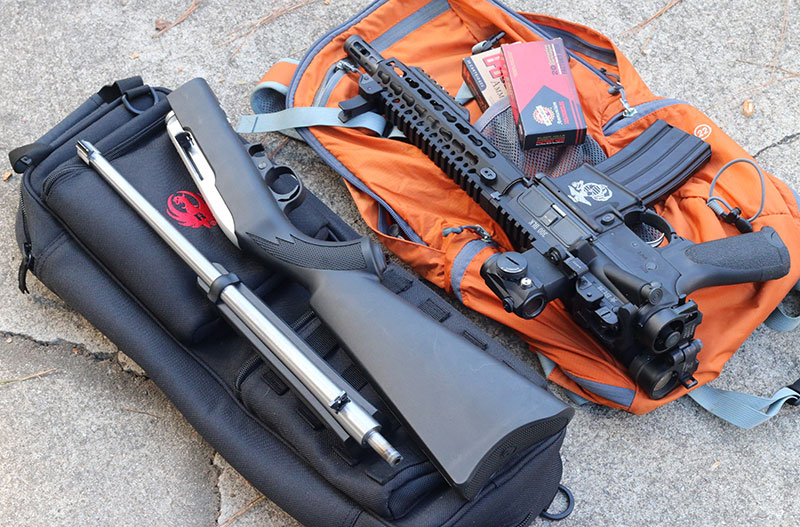
When I ran the test, I included a second reduced silhouette out at 90 yards and immediately transitioned to it upon hitting the 40-yard A zone. With the shotguns, the smallish target was out of reliable buckshot range, and it usually took two or more attempts with the simple bead sight to lob a Federal Tru-Ball slug onto the steel.
The rifles and .300 pistol both took the longer shots in stride without complaint.
THOUGHTS
The classic shotguns were slow and sufficiently awkward to mostly rule out assembly at point-of-crisis mode. But for transport, the photos show that they break down almost as small as the 10/22. Of course, single-barrel and double-barrel coach guns break down as much or more compactly but complicate follow-up shots.
The 10/22 Takedown is a super slick little rimfire. Particularly with the BX trigger, the rifle hits easily, weighs little, and is quickly ready to jump together and roll rabbits or repel rascals. Even pressed into defensive application, there is something to be said for the ability to launch a hail of deep-penetrating .22 projectiles from the light, easy-to-shoot Ruger.
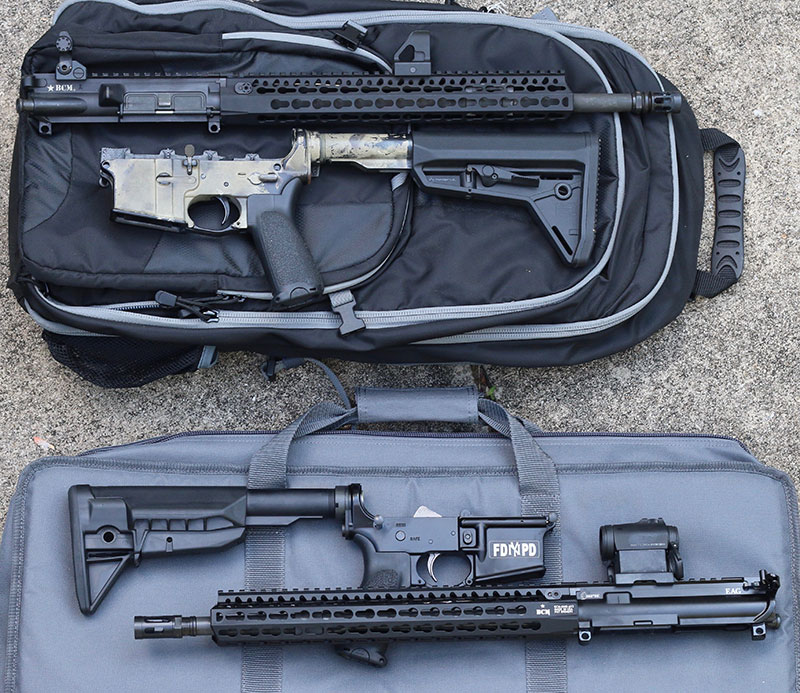
I was somewhat surprised by the AR carbine. Many do not think of the design as a takedown, but it breaks down neatly, stores relatively easily with a carbine length or shorter barrel, and assembles surprisingly fast. Many of the old takedown rifle designs sacrificed accuracy for the takedown feature—the AR doesn’t have that issue.
I didn’t test any of the AR-10-style large receiver .308/large bore ARs, but I expect they would assemble in similar time frames to those shown.
The .300 Pistol with folding brace/buffer tube, though not a true takedown, really shines in most of the applications that a takedown would typically be applied in. The ready availability of subsonic ammo to use on small game and the continually improving selection of supersonic loads for defensive use give the nine-inch AR quite a bit of versatility.
Justin Dyal retired from the U.S. Marines as a Lt. Colonel with worldwide experience in specialized units. He has taught and been responsible for numerous advanced skills and weapons courses within multiple organizations.
[Editor’s Note: As noted above, the takedown Model 97’s magazine tube cannot be loaded until it is assembled. Louis Awerbuck was well known for seeing a problem and thinking it through until he found a solution. Louis drilled a hole in the magazine tube, loaded it, and then kept the shells in place with a cotter pin. Connect the receiver to the barrel/mag tube assembly, pull the pin, and the gun was ready to rock.]
ASSEMBLY AND FIRST HIT
| FIREARM | AMMO | FASTEST ASSEMBLY TIME & 40-YARD HIT | AVERAGE TIME |
| BCM .300 Pistol | Black Hills 125-gr. OTM | 4.70 seconds | 5.02 seconds |
| Ruger 10/22 | CCI Velocitor | 6.14 seconds | 7.62 seconds |
| Noveske/BCM Carbine | Black Hills 70-gr. GMX | 6.49 seconds | 7.93 seconds |
| 97 Winchester | Winchester #1 Buck | 12.36 seconds | 17.99 seconds |
| Stevens 520 | Hornady Tap 00 Buck | 20.40 seconds | 21.67 seconds |
SECOND HIT
| FIREARM | AVERAGE TIME TO HIT SECOND TARGET AT 90 YARDS |
| BCM .300 Pistol | 2.25 seconds |
| Ruger 10/22 | 2.30 seconds |
| Noveske/BCM Carbine | 1.79 seconds |
| Shotguns | 7.2 seconds to N/A |
